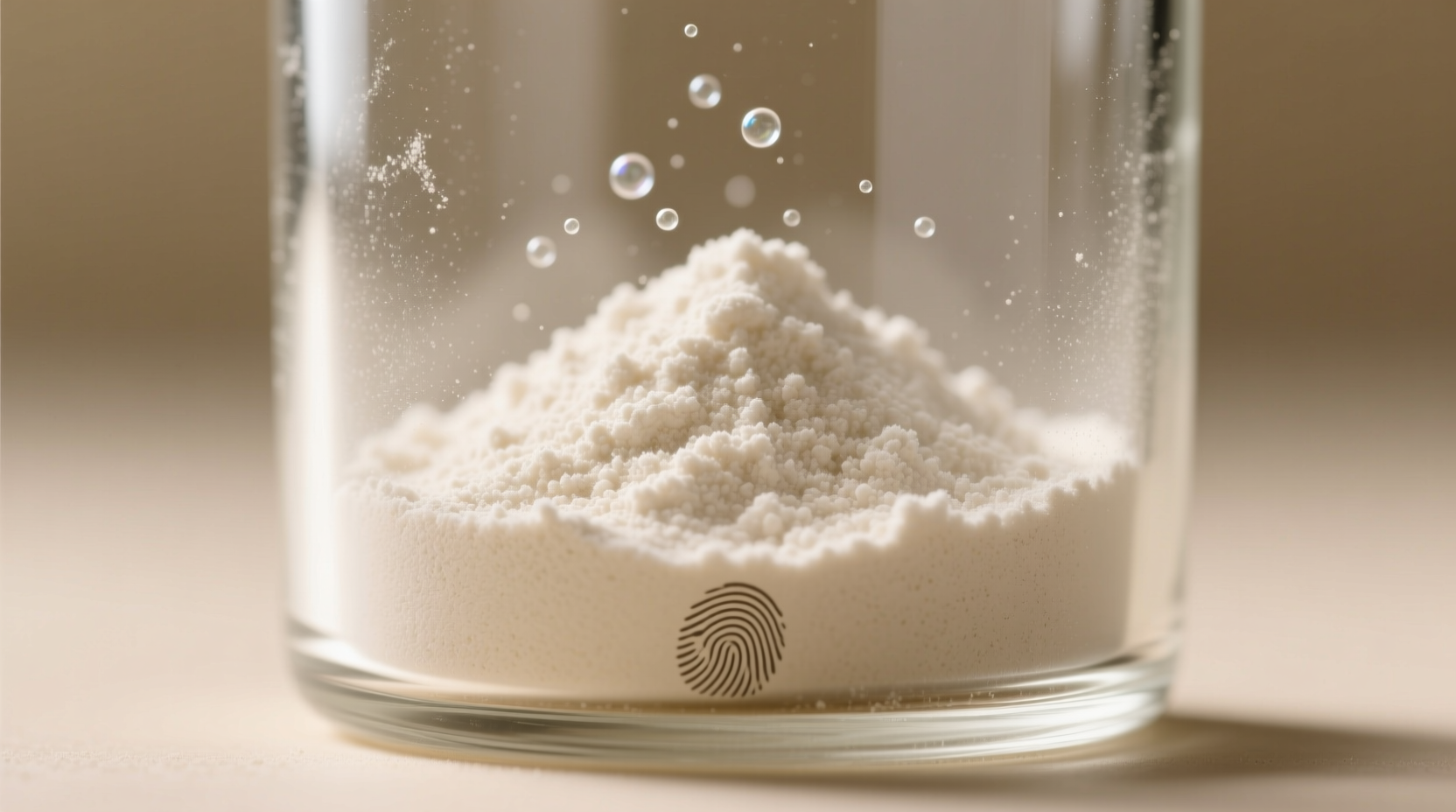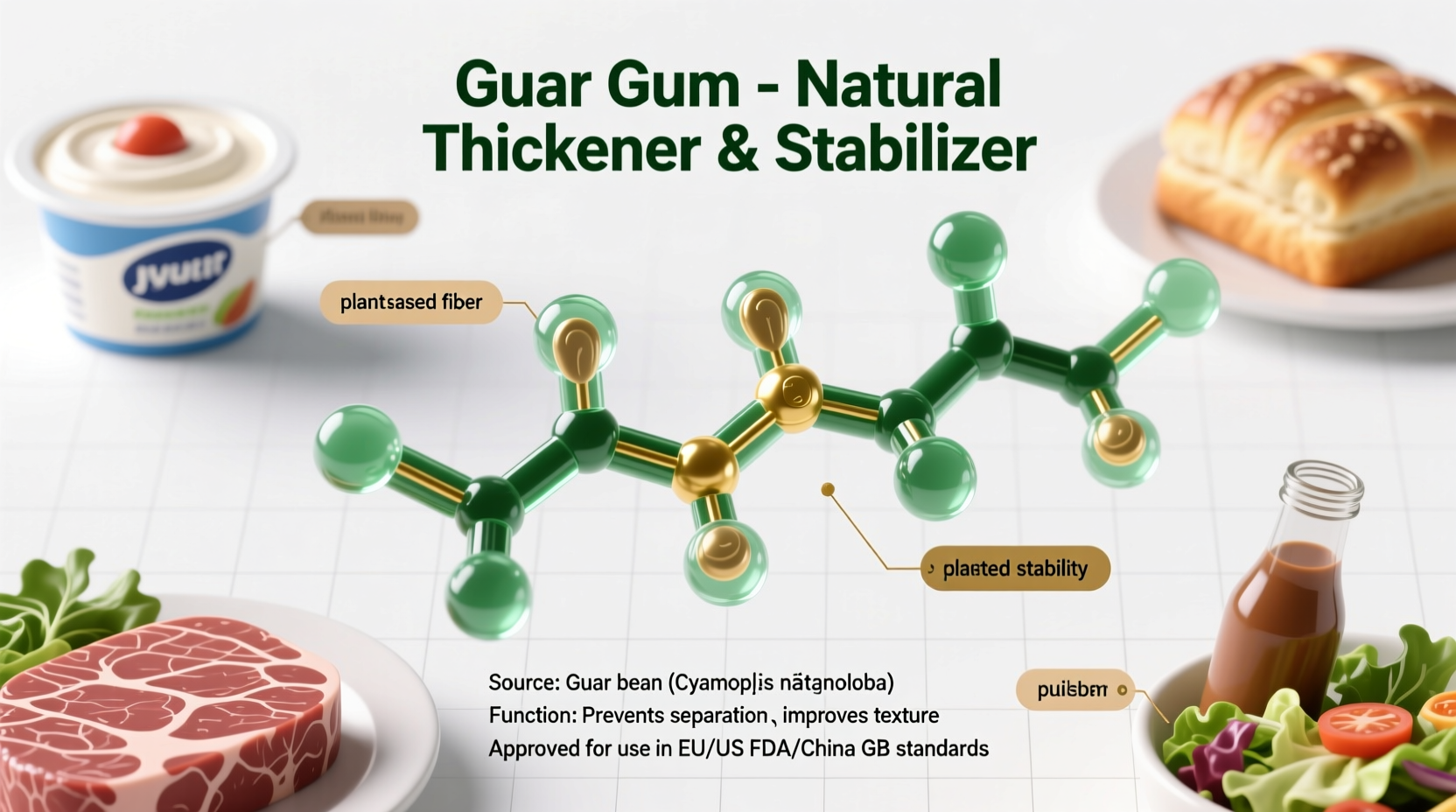Guar gum is a natural thickening and stabilizing agent derived from guar beans (Cyamopsis tetragonoloba), commonly used in food products to improve texture, prevent ingredient separation, and enhance shelf life. This plant-based polysaccharide has been safely used in food manufacturing since the 1950s and is approved by major food safety authorities worldwide including the FDA and EFSA.
Ever found yourself staring at an ingredient list wondering what is guar gum in food and whether you should be concerned? You're not alone. As processed foods increasingly feature this mysterious ingredient, understanding guar gum's role, safety profile, and practical applications becomes essential for informed food choices. This comprehensive guide cuts through the confusion with science-backed information you can trust.
Understanding Guar Gum: From Bean to Food Additive
Guar gum originates from the endosperm of guar beans, primarily grown in India and Pakistan. The production process involves dehusking, hydration, milling, and drying to create the fine powder familiar to food manufacturers. Chemically, guar gum consists of galactomannan—a polysaccharide with a mannose backbone and galactose side groups that gives it exceptional water-binding capabilities.
Unlike artificial additives, guar gum has been part of human consumption for centuries in traditional Indian cuisine, where guar beans were ground into flour for flatbreads. Its industrial food application began in the 1950s when food scientists discovered its remarkable thickening properties at concentrations as low as 0.5%.
| Characteristic | Guar Gum | Xanthan Gum | Corn Starch |
|---|---|---|---|
| Source | Guar beans | Fermented sugar | Corn |
| Thickening Power | High (8x corn starch) | Very high | Moderate |
| Heat Stability | Good up to 80°C | Excellent | Poor (breaks down) |
| Freeze-Thaw Stability | Moderate | Excellent | Poor |
| Gluten-Free | Yes | Yes | Yes |
Why Food Manufacturers Choose Guar Gum
Food producers rely on guar gum for several critical functions that directly impact your eating experience. When dissolved in water, guar gum molecules form a viscous solution that traps moisture and prevents ingredient separation—making it indispensable in products like salad dressings where oil and water would otherwise separate.
For gluten-free baking enthusiasts, guar gum serves as a crucial structural component. Without gluten's natural binding properties, baked goods would crumble. Just 1-2 grams of guar gum per cup of flour creates the elasticity needed for breads and cakes to maintain their shape while providing that satisfying chew.
The frozen food industry particularly values guar gum's ability to control ice crystal formation. In ice cream production, it prevents the formation of large ice crystals that create a gritty texture, ensuring that scoopable smoothness we expect from premium products. Major brands like Ben & Jerry's and Häagen-Dazs utilize guar gum alongside other stabilizers to maintain texture consistency through multiple freeze-thaw cycles.

Guar Gum Safety: What Scientific Research Reveals
Concerned about is guar gum bad for you? Extensive research provides reassuring answers. The U.S. Food and Drug Administration (FDA) classifies guar gum as Generally Recognized As Safe (GRAS) under 21 CFR 172.625, while the European Food Safety Authority (EFSA) has established an acceptable daily intake (ADI) of 10 mg/kg body weight.
A comprehensive 2021 review published in Food Chemistry analyzed over 50 studies on guar gum's safety profile, concluding that "guar gum demonstrates no genotoxic, carcinogenic, or significant adverse effects at concentrations used in food applications." The study, available through the National Center for Biotechnology Information (NCBI) at https://www.ncbi.nlm.nih.gov/pmc/articles/PMC7820512/, represents current scientific consensus on guar gum safety.
Some individuals with sensitive digestive systems may experience temporary bloating or gas when consuming guar gum, particularly at higher concentrations. This occurs because guar gum is a soluble fiber that feeds beneficial gut bacteria. Gradually increasing fiber intake allows your system to adapt—similar to introducing any high-fiber food.
Practical Applications in Your Kitchen
While commercial food producers use guar gum extensively, home cooks can leverage its properties for specific culinary challenges. When making dairy-free sauces or soups, add guar gum gradually while whisking to prevent clumping—just 1/4 teaspoon per cup of liquid creates ideal thickness without altering flavor.
For gluten-free baking success, combine guar gum with xanthan gum in a 2:1 ratio. This blend provides superior elasticity compared to either gum alone. Remember that different gluten-free flour blends require varying amounts of guar gum—start with 1 teaspoon per cup of flour and adjust based on your recipe's moisture content.
Chef Antonio Rodriguez notes: "Guar gum's real magic happens in cold applications where traditional thickeners fail. Try it in your next fruit pie filling—it prevents syrupy separation without the chalky texture of cornstarch, and it works beautifully in no-bake desserts that never reach cooking temperatures."
Limitations and When to Choose Alternatives
Despite its versatility, guar gum has specific limitations that affect its performance in certain applications. In highly acidic environments (pH below 4.5), guar gum's thickening ability significantly decreases—making it less suitable for citrus-based products or vinegars. For these applications, xanthan gum maintains stability across a wider pH range.
Temperature also affects guar gum performance. While it activates in cold liquids, prolonged heating above 80°C (176°F) causes viscosity breakdown. For boiling applications like soups or stews, consider adding guar gum after cooking to preserve its thickening properties.
When exploring guar gum substitutes in baking, consider these alternatives based on your specific needs:
- Psyllium husk: Best for bread structure (use 1:1 ratio)
- Flaxseed gel: Ideal for egg replacement (1 tbsp ground flax + 3 tbsp water = 1 egg)
- Chia seeds: Excellent for binding in vegan recipes
- Xanthan gum: Superior for acidic applications (use 1/3 the amount of guar gum)
Reading Labels: Where You'll Find Guar Gum
Guar gum appears in countless everyday products, often listed simply as "guar gum" or by its E-number E412 in European products. Check these common categories:
- Gluten-free breads, pastas, and baked goods
- Plant-based milks and dairy alternatives
- Ice creams and frozen desserts
- Salad dressings and sauces
- Ready-to-eat meals and soups
- Meat products (as a binder)
When examining ingredient lists, remember that guar gum typically appears near the end, indicating its use at low concentrations. Its position reflects that food manufacturers need only small amounts to achieve desired effects—usually between 0.1% and 1% of the total product weight.
Environmental and Ethical Considerations
As consumer awareness grows about is guar gum natural, understanding its agricultural impact becomes relevant. Guar cultivation requires significantly less water than many alternative crops and grows well in semi-arid conditions where few other crops thrive. The International Guar Gum Association reports that guar farming supports over 500,000 smallholder farmers in India's Rajasthan region, providing crucial economic stability in challenging agricultural environments.
Unlike some food additives with complex supply chains, guar gum production involves minimal processing—simply milling the endosperm of the guar bean. This straightforward manufacturing process contributes to its classification as a "clean label" ingredient by many food manufacturers seeking to reduce synthetic additives.











 浙公网安备
33010002000092号
浙公网安备
33010002000092号 浙B2-20120091-4
浙B2-20120091-4